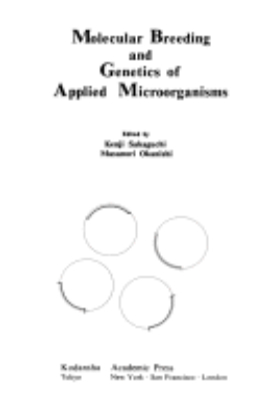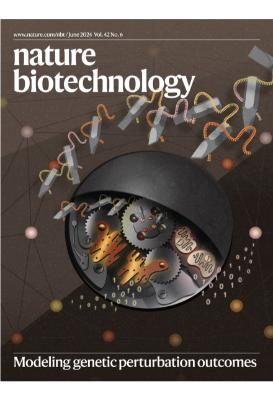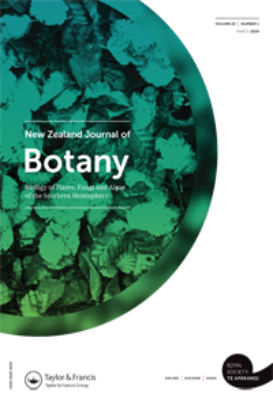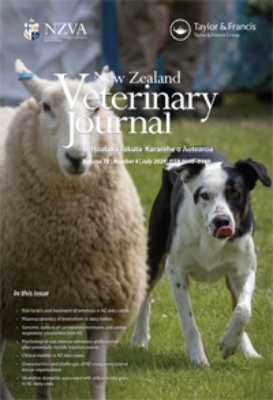Life Science
Medical Epigenetics
Medical Epigenetics provides a comprehensive analysis of the importance of epigenetics to health management. The purpose of this book is to fill a current need for a comprehensive volume on the medical aspects of epigenetics with a focus on human systems, epigenetic diseases that affect these systems and modes of treating epigenetic-based disorders and diseases. The intent of this book is to provide a stand-alone comprehensive volume that will cover all human systems relevant to epigenetic maladies and all major aspects of medical epigenetics. The overall goal is to provide the leading book on medical epigenetics that will be useful not only to physicians, nurses, medical students and many others directly involved with health care, but also investigators in life sciences, biotech companies, graduate students and many others who are interested in more applied aspects of epigenetics. Research in the area of translational epigenetics is a cornerstone of this volume.
Metabolic Biochemistry and Molecular Biomechanics
The Mollusca, Volume 1: Metabolic Biochemistry and Molecular Biomechanics provides information pertinent to the advances in the traditional areas of biochemistry and in other developed areas that have become a part of molluskan biochemistry. This book discusses the developments in the various aspects of molecular biomechanics and environmental biochemistry. Organized into 11 chapters, this volume begins with an overview of the phylum Mollusca. This text then provides information about the general features of the main classes and their evolution, the anatomical organization of mollusks, and a classification of the primary taxonomic groups of mollusks. Other chapters consider the functional mechanical properties of two protein rubbers found in molluskan connective tissues. This book discusses as well the mechanical properties of molluskan mucins. The final chapter deals with the significance of quinone tanning in mollusks. This book is a valuable resource for researchers of the Mollusca and other phyla, as well as to teachers and qualified graduate students. Biochemists and physiologists will also find this book useful.
Methods and Goals in Human Behavior Genetics
Methods and Goals in Human Behavior Genetics examines trends in behavior genetics research and presents a critical review of methodology. This volume was planned to be of interest to two types of readers. First it provides information for psychologists who are interested in the genetics of personality and ability. Second, it is hoped that the volume will be of some value to geneticists who are desirous of knowing about recent attempts by psychologists to study hereditary factors in human behavior. The contributions to this volume are in some cases similar to papers presented during a meeting held in Louisville where this volume was planned, while the comments following these papers are based on tape recordings of the ensuing discussions. The book opens with a discussion of biochemical genetics and gene action. Separate chapters follow in topics such as application of anthropology to genetics, twin studies, heritability of personality traits, and suggestions for human behavior genetics based on animal studies.
Methods for Plant Molecular Biology
Methods for Plant Molecular Biology is a collection of articles that focuses on the techniques used in plant molecular biology and genetics. The book discusses the isolation and characterization of nuclear, chloroplast, and mitochondrial nucleic acids and the factors and systems involved in transcription and gene expression. Procedures for the isolation of cell walls, chloroplast membranes, membrane proteins; techniques to carry out plant cell culture and protoplast formation; and methods for gene and organelle transfer are covered as well. Biologists, molecular biologists, botanists, and students will find the book very useful.
Methods in Applied Soil Microbiology and Biochemistry
In recent years, rapid technological advances and changes in agricultural management have taken place. These have yielded benefits to society but have also generated new and significant environmental problems. Novel questions and challenges relating to agricultural practice and soil microbial ecology, ecotoxicology, biotechnology, and bioremediation must be addressed. As a consequence, the fields of soil microbiology and biochemistry have been highlighted. This book provides a modern, authoritative, and comprehensive collection of methods for the study of soil microbiology and biochemistry. Classical and modern, aerobic and anerobic, laboratory and field-based methods are presented. Detailed techniques are given, but in addition the theoretical basis behind such methodology is described, so that the origins and principles of the techniques are clear to the reader. Particular emphasis has been placed on uniform, simple, and clear presentation of the different methods. With respect to bioremediation of soils, this work provides a unique bridge between general and applied soil microbiology and biochemistry, presenting an integrated discussion of concepts, theories, and methods. This book will be essential for all scientists and students actively involved in natural and environmental sciences and engineering, and for those working in industry, authorities, and consulting companies.
Methods in Plant Molecular Biology
"Methods in Plant Molecular Biology is a lab manual that introduces students to a diversity of molecular techniques needed for experiments with plant cells. Those included have been perfected and are now presented for the first time in a usable and teachable form. Because the manual integrates protein, RNA, and DNA techniques, it will serve students, teachers, and researchers in plant physiology, biophysics, and animal molecular biology who have no previous experience handling recombinant DNA or purified proteins. It can also be used by the established molecular biologist who wishes to utilize the powerful techniques of recombinant DNA to explore the mysteries of the plant kingdom. Key Features. Eight basic experiments which can be used collectively or individually cover. Recombinant Cloning and Screening in E. coli; DNA Sequencing. Plant RNA Isolation and in Vitro Translations. Plant DNA Isolations and Genomic DNA Southern AnalysisChloroplast Isolation and Protein SynthesisPlant Tissue Culture and Agrobacterium Transformations. Experiments that have been student tested for three years. Blueprints for setting up gel rigs. Comprehensive course schedule outlining individual procedures to be finished in each lab segment. Course can be tailored to suit the needs of the individual instructor"
Modern Approaches to Animal Cell Technology
Modern Approaches to Animal Cell Technology is a collection of papers presented at the 1987 joint European Society for Animal Cell Technology-OHOLO conference held in Tiberias, Israel. Contributors explore modern approaches to animal cell technology and discuss the construction of the animal cell substrate, the physiology of those cells in a bioreactor type of environment, and the ways in which different products can be made from animal cells in culture and tested. This book is comprised of 59 chapters divided into nine sections and begins by outlining the history of issues and decisions that were made regarding the acceptability of various cell substrates, along with the use of continuous cell lines in biotechnology. The next chapter explores the feasibility, reproducibility, and the sensitivity of the dot-blot filter hybridization test to detect minute amounts of residual cellular DNA. The reader is then introduced to cells and cell lines such as monoclonal antibodies; cell growth and development; physiology of cells; and the use of bioreactors for culturing animal cells. Downstream unit processes, vaccines, immune system products, and toxicity testing with animal cells are also considered. This monograph will be a valuable resource for animal-cell technologists, biotechnologists, and microbiologists.
Molecular Biology of Plant Nuclear Genes
Cell Culture and Somatic Cell Genetics of Plants, Volume 6: Molecular Biology of Plant Nuclear Genes focuses on the spectacular and rapid advances in the molecular biology and genetics of plants. This book consists of 19 chapters. Chapters 1 to 5 describe the most commonly used approaches for the genetic transformation of plants. The light-inducible and tissue-organ-specific genes are discussed in Chapters 6 to 11. In Chapters 12 to 14, the genes regulating phytohormone synthesis, heat shock proteins, and nodulation in legume roots are treated, while in Chapters 15 to 16, the relationship between chromatin structure and gene expression and molecular biology of plant RNA viruses are analyzed. The development of transgenic plants resistant to viruses, insects, and herbicides is dealt with in the last three chapters. This volume is suitable for plant molecular biologist, genetic engineers, and researchers concerned with plant cell and tissue culture.
Molecular Biology of Plant Tumors
Molecular Biology of Plant Tumors provides an opportunity to learn in detail about the latest insights into the mechanism of transformation of plant cells by Agrobacterium tumefaciens. The study of the molecular mechanism responsible for the crown gall phenomenon (induced by Agrobacterium tumefaciens) illustrates the point that the fundamental study of the cause(s) and mechanism(s) of abnormal growth might be one of the most efficient ways to understand cellular differentiation and the molecular basis of gene expression. The book is organized into three parts that contain research on abnormal plant growth, crown gall tumors, and potential vectors for genetic engineering in agriculture. The genetic structure responsible for the neoplasmic transformation of plant cells in crown galls is a bacterial plasmid (called Ti for tumor-inducing). Research described in this volume demonstrates that these Ti plasmids were designed by evolution as natural gene vectors with which some bacteria can introduce active genes into plants. These transferred genes are maintained by integration in the plant genome and their expression is directly or indirectly responsible for the tumorous growth pattern.
Molecular Breeding and Genetics of Applied Microorganisms
Molecular Breeding and Genetics of Applied Microorganisms provides expert reviews on the developments in the field of applied microbiology in Japan. The book presents areas where further progress in applied microbiology is possible. Articles on these possibilities such as the use of recombinant DNA techniques to link fragments of DNA from unrelated organisms; creation of new strains of microorganisms to control pollution; construction of a ""biological battery"" using a photosynthetic system; and breeding of plant species tolerant to various plant diseases are explored in detail. Microbiologists, biologists, geneticists, biochemists, pharmacologists, and researchers will find the book insightful.
Molecular Genetics
Molecular Genetics, Part III: Chromosome Structure explores the structure and modification of DNA, chromatin, and higher order organization and possible subunits of chromosomes at the molecular level. It describes major changes in concepts of chromatin structure and packaging of DNA based on studies of nuclease digests and electron micrographs; the role of restriction endonucleases in molecular genetics; the involvement of DNA topoisomerases in concerted breaking and rejoining of DNA backbone bonds; enzymatic methylation of DNA; and transcriptional units in eukaryotic chromosomes. Organized into seven chapters, this volume begins with an overview of the general properties of type I and type II restriction enzymes, basic aspects of restriction enzyme technology, and applications of restriction enzyme technology to the study of chromosome structure and function. It then discusses recombinant DNA technology; possible biological roles of DNA topoisomerases; recognition and control sequences in nucleic acids; composition and substructure of nucleosomes; analysis of chromosome fibers by electron microscopy; organization of fibers into chromosomes; and functional aspects of organization of chromosome fibers. Molecular biologists, geneticists, scientists, and electron microscopists will find this book extremely helpful.
Molecular Genetics of Sex Determination
In this era of accelerated discovery and prolific output, Molecular Genetics of Sex Determination keeps readers abreast of this fields fast-moving biology. Its chapters were completed by experts in eacharea only months before publication. The text is organized into two parts. First, it reviews the basic biology of sex determination and summarizes ground-breaking work in mouse, marsupial, and Drosophila systems. Second, it covers current human genetics, clinical studies, and the syndromes of abnormal sex differentiation. With chapters by preeminent reproductive biologists, this is a capital work. Ohno's law is described by Ohno; the Lyon hypothesis, by Lyon; Sinclair tells how he cloned the testis-determining gene; and so on. Molecular Genetics of Sex Determination is authoritative, comprehensive, and current. It is prime reading for geneticists, developmental biologists, graduate students in these and related fields, clinical researchers, physicians, and medical students.
Molecular Genetics: 2000
Molecular Genetics, Part II covers the significant developments in various areas of molecular genetics. This book is composed of 10 chapters that also consider the gene expression and regulation of some enzymes. The opening chapters deal with the mechanisms of nucleic acid replication and repair, as well as the structural aspects of the genetic apparatus of viruses and cells. The next chapters explore the patterns and mechanisms of genetic recombination, the in vitro and in vivo experiments to delineate the genetic code, and the initiation of peptide chains in Escherichia coli. These topics are followed by discussions of the mechanism of DNA-dependent RNA synthesis, the regulation of enzyme synthesis in microorganisms, and the regulation of viral replication. The final chapters consider the theoretical and practical aspects of the metabolic regulation in metazoan system and the procedures for the study of DNA-DNA and DNA-RNA interactions. This book will be of great value to molecular geneticists, biochemists, and researchers.
Muscle and Meat Biochemistry
Muscle and Meat Biochemistry teaches the different concepts and topics under the eponymous subject. The book covers the gross and detailed composition and structure of muscles and the relationship of the nervous system with the muscular system; muscle cell differentiation and growth; proteins of the thick filament; and the molecular structure and enzymatic activity of myosin. The text also discusses the proteins found in the thin filament - actin, troponin, and myosin; skeletal muscle growth; protein metabolism; and fiber types. The book also encompasses cardiac and smooth muscle; sarcoplasmic proteins; the connective tissues - collagen, elastin, and ground substance; and the postmortem changes during conversion of muscle to meat. The text is recommended for advanced undergraduate and graduate students, as well as for scientists who would like to know more about muscle biology, muscle physiology, and meat science.
Natural Resource Administration
"Natural Resource and Wildlife Administration presents a clear perspective on natural resource administration in North America, how it developed, how it is currently structured, and where it might be heading. Intertwined areas of natural resources, including wildlife administration, fisheries, forestry, and other competitive land uses, are heavily discussed. The book covers the history of natural resource management in Europe and North America, proceeding to environmental law; agencies involved in wildlife and natural resource management; and the human dimensions of public relations and economic concerns. Natural Resource and Wildlife Administration provides solid background on the history of natural resource conservation, critical laws protecting resources, and the nature of agencies. The interconnectedness among natural resources makes this a useful text for disciplines such as wildlife, fisheries, and forestry. Key Features. Covers the development of natural resource law and the conservation agencies in North America, and also provides models for international use. Examines the roles of diverse federal, state, and non-governmental agencies, and how they cooperate as professionals to accomplish natural resources management. Leads readers to a greater understanding of the politics and interplay of priorities in professional conservation biology. Assists the certification processes of professional societies. Includes end-of-chapter questions for further thought and discussion, as well as offset boxes throughout the text to help explain more technical subjects"
Newer Methods of Nutritional Biochemistry with Applications and Interpretations: Volume 1
Newer Methods of Nutritional Biochemistry: With Applications and Interpretations, Volume I, provides graduate biochemistry students and medical scientists with a compilation of biochemical procedures which have extensive applications in nutrition research. To this end, several approaches to further exploration of protein, carbohydrate, and fat metabolism and the interrelationship with enzymes, vitamins, and minerals are covered in some detail. Comprised of 11 chapters, this book discusses proteins and amino acids; utilization of dietary proteins; intestinal absorption; diet and tissue enzymes; and rates and the kinetics of enzyme formation and destruction in the living animal. It considers vitamins B1, B2, B6, niacin, and ascorbic acid; vitamin B12 and intrinsic factor; carbohydrates; fats, fatty acids, and sterols; minerals; and biostatistical methods for nutritional and metabolic investigations.
Newer Methods of Nutritional Biochemistry with Applications and Interpretations: Volume 3
Newer Methods of Nutritional Biochemistry: With Applications and Interpretations, Volume III, provides a compilation of biochemical procedures which have extensive applications in nutrition research. The focus is on simple procedures to evaluate the utilization of dietary proteins given the pressing problems in emergency feeding of populations in developing countries. Comprised of nine chapters, this book discusses the nutritional and metabolic implications of changes in urinary amino acid levels. It examines the concept, role, and implications of protein reserves in the young and adult subjects. It also describes procedures which have contributed to the development of in vitro methods for the evaluation of protein quality. The book also discusses plant protein resources; lipoprotein transport; chemical assay of adrenocorticosteroids; studies of zinc metabolism; and folates in human nutrition.
Newer Methods of Nutritional Biochemistry with Applications and Interpretations: Volume 4
Newer Methods of Nutritional Biochemistry: With Applications and Interpretations, Volume IV, presents discussions and reviews of principles and procedures of nutritional biochemistry which have been developed for assays of nutritive quality of foods. Comprised of six chapters, this book describes determinations of dietary needs of fats, vitamins, and amino acids which fail to apply the long-known ""Law of Diminishing Returns"" to the experimental data. It examines the correlation of urinary metabolites with dietary conditions from the point of view of the dynamic state of metabolism. The book also discusses analytical methods for determining plasma amino acids and their application to nutritional problems of young children; laboratory methods for evaluating changes in protein quality; optimal nutrition for the aged and basic mechanisms of biological aging; and advances in instrumentation and methodology and their application in resolving biological and nutritional problems.






























